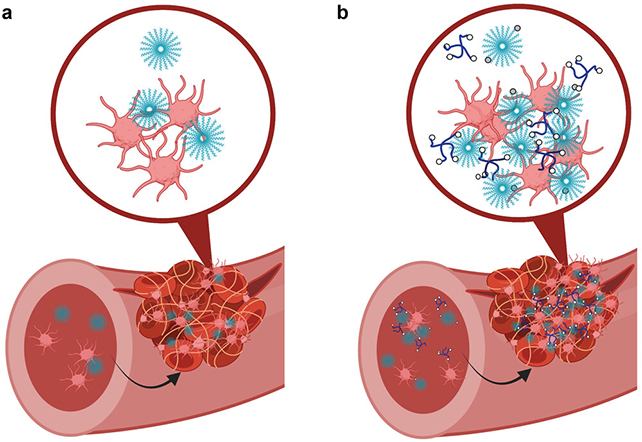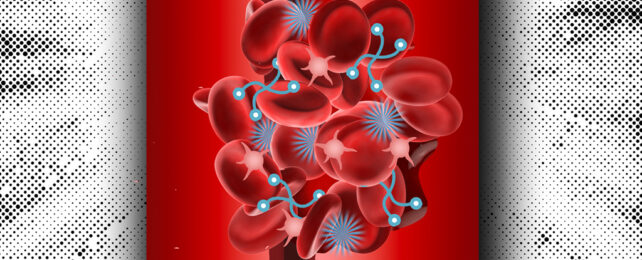Blood clots are one of the body's most important natural defense systems, a mechanism for plugging internal and external gaps to keep us alive. However, in cases where the body is losing a lot of blood, the clotting process can't keep up. This is where a new synthetic replacement could come in.
Researchers have developed a two-component system that targets internal injuries without causing any unwanted damage of its own. The two components match the body's platelets (cell fragments that trigger clotting) and fibrinogen (a protein that helps clots to form).
So far, the synthetic process has only been tested on mice, but it effectively triggered the blood clotting part of the natural hemostasis reaction to wounds and proved significantly better at stopping bleeding than previous approaches.

"The idea of using two components allows selective gelation of the hemostatic system as the concentration is enhanced in the wound, mimicking the end effect of the natural clotting cascade," says chemical engineer Bradley Olsen from the Massachusetts Institute of Technology (MIT).
The first part of the system is a biocompatible polymer nanoparticle called PEG-PLGA that is engineered to bind to whatever platelets the body can provide while injured. Platelets are drawn to the site of an injury, which in turn carries in these bound nanoparticles.
The second part of the system is a polymer that takes the place of fibrinogen and starts creating clumps through a reaction with the nanoparticles. The team describes this second component as a crosslinker, essentially getting the particles that have formed around a wound to join together.
Crucially, the researchers designed the particles in a form where they wouldn't accumulate in places where they shouldn't (in the wrong spots, blood clots can also be dangerous to our health) by having them only crosslink at a high enough concentration.
In a tiny initial mouse trial, not only did the synthetic system prove highly effective, but also it lasted longer than normal blood clots would. Moreover, the system didn't trigger any unwanted immune system reactions in the animals.
The next step is a larger mouse model trial.
"The idea is that with both of these components circulating inside the bloodstream if there is a wound site, the targeting component will start accumulating at the wound site and also bind the crosslinker," says chemical engineer Celestine Hong from MIT.
"When both components are at high concentration, you get more crosslinking, and they begin forming that glue and helping the clotting process."
Blood loss from traumatic events such as car crashes claims millions of lives per year. It's essential that bleeding is stopped as quickly as possible, but with internal bleeding in particular, it can be challenging to identify what's happening and where.
This system would automatically target the site of the problem and provide some help for the body until more comprehensive medical assistance can be given. All that would be required is an injection that first responders could provide.
With further testing, the researchers think that the system they've developed could even help medical professionals identify where internal bleeding is happening much more quickly and without expensive or complex equipment.
"What was especially remarkable about these results was the level of recovery from severe injury we saw in the animal studies," says chemical engineer Paula Hammond from MIT. "By introducing two complementary systems in sequence, it is possible to get a much stronger clot."
The research has been published in Advanced Healthcare Materials.
